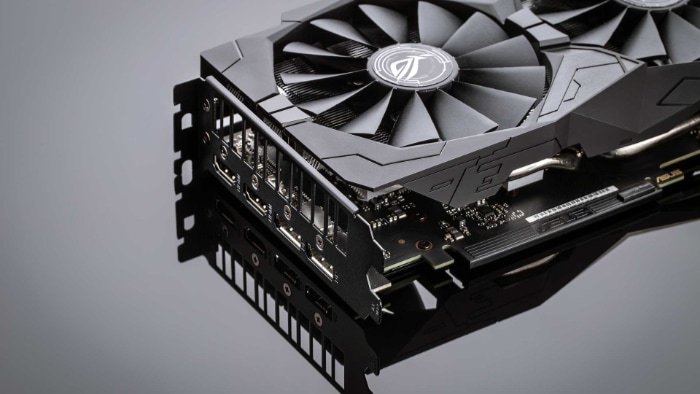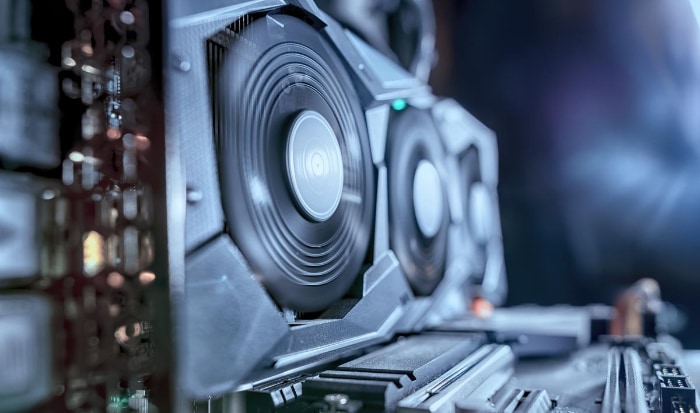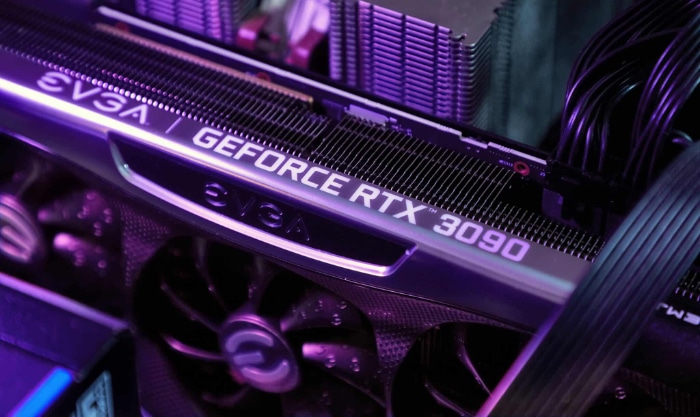How to Lower GPU Temperature: Essential Cooling Strategies

Managing GPU temperatures is crucial for both the longevity of your graphics card and the overall performance of your system. High temperatures can lead to a range of problems, from frequent system crashes to diminished hardware lifespan.
As graphics cards continue to evolve, becoming more powerful and complex, the heat they produce also increases. This heat, if not effectively managed, can compromise the card’s performance, leading to a suboptimal gaming or work experience.
Understanding the importance and methods of keeping your GPU cool ensures that you not only get the best performance out of your system but also safeguard your investment in your hardware
The Basics of GPU Temperature
The temperature of your Graphics Processing Unit (GPU) can be likened to the heartbeat of a human. Just as the heartbeat provides vital information about one’s health, the GPU temperature can give insights into the well-being and performance of a computer.
To effectively manage and optimize this temperature, it’s essential to understand its basics.
How GPUs Generate Heat
Every electronic device emits heat, and GPUs are no exception. The GPU, with its intricate design and function, processes large amounts of data at rapid speeds.
As it performs complex computations, especially during tasks like gaming, rendering, or video editing, electrical energy is converted into thermal energy, resulting in heat.
Ideal Temperature Range for GPUs
Different GPUs have varying temperature thresholds, but most modern GPUs are designed to operate safely at temperatures up to 90°C. However, for prolonged hardware lifespan and optimal performance, it’s recommended to keep the temperature between 65°C to 85°C.
Consistently running your GPU at higher temperatures can lead to decreased performance and, over time, potential damage.
Factors Affecting GPU Temperature
Several factors can influence how hot your GPU gets:
- Load on the GPU: Intensive tasks such as high-end gaming or 3D rendering will cause the GPU to work harder, increasing its temperature.
- Ambient Room Temperature: A warmer environment can cause the GPU to start at a higher baseline temperature.
- Cooling Mechanisms: The quality and functionality of cooling solutions, like fans or water cooling systems, play a pivotal role.
- Airflow within the PC Case: Proper airflow ensures that hot air is efficiently expelled while cool air is drawn in, aiding in temperature regulation.
Techniques to Manage and Lower GPU Temperature
Ensuring that your GPU runs at optimal temperatures is pivotal to its performance and longevity. With rising demands on graphical fidelity in applications and games, there’s a simultaneous increase in the amount of heat produced by modern GPUs.
Fortunately, there are a multitude of techniques that can help manage and reduce this heat, ensuring your graphics card remains cool and operates efficiently.
Adjust Fan Speed
GPU fans play an important role in cooling the graphics card. They help dissipate the heat generated by the GPU, ensuring it doesn’t reach harmful levels. The faster these fans spin, the more heat they can potentially dissipate.
Tools and Software for Fan Adjustment
There are several software solutions available that allow users to manually adjust the speed of their GPU fans. MSI Afterburner, for instance, is a popular tool that provides a user-friendly interface to manage and monitor various GPU settings, including fan speed.
Finding the Optimal Fan Curve
While running fans at maximum speed may seem like an effective way to cool the GPU, it’s not always the best approach. An optimal fan curve ensures that the fan speed increases in response to rising GPU temperatures, providing adequate cooling without unnecessary noise.
By adjusting this curve, users can strike a balance between cooling efficiency and system noise.
Improve Case Airflow
Airflow is paramount to maintaining lower temperatures inside the case. Efficient airflow ensures that hot air produced by the GPU and other components is expelled rapidly, while cool air is continually drawn in.
Strategies to Optimize Airflow
Positioning Case Fans Correctly
Ensuring that case fans are positioned effectively can make a significant difference. Typically, front and bottom fans should intake cool air, while top and rear fans expel hot air. This creates a consistent flow of air across components.
Balancing Intake and Exhaust Fans
Having a balanced number of intake and exhaust fans ensures that there’s neither a vacuum nor an overpressure inside the case. This balance is crucial for effective temperature management.
Investing in High-Quality Fans
Not all fans are created equal. Investing in high-quality, reliable fans can improve airflow efficiency and decrease overall system noise.
Replace Thermal Paste
Thermal paste, sometimes called thermal grease or compound, is a substance placed between the GPU (or any processor) and the heatsink. Its primary function is to fill in any microscopic gaps between the two surfaces, ensuring optimal heat transfer.
Without it, these gaps, although tiny, can trap air, which is a poor conductor of heat. The thermal paste ensures the GPU’s heat is efficiently transferred to the heatsink, where it’s then dissipated by fans or other cooling mechanisms.
Signs of Old or Ineffective Thermal Paste
Over time, thermal paste can degrade, dry out, and become less effective. Some indications that your thermal paste may need replacement include:
- Higher than usual GPU temperatures under normal workloads.
- Visible signs of drying or cracking when inspecting the paste.
- Inconsistent temperatures, with sudden spikes and drops.
Steps to Replace Thermal Paste on a GPU
- Preparation: Before starting, gather all necessary materials such as the new thermal paste, isopropyl alcohol (for cleaning), lint-free cloth or paper towel, and a soft brush.
- Disassembly: Turn off the computer and carefully remove the GPU. Detach the GPU’s cooler or heatsink to expose the GPU chip.
- Cleaning: Gently clean off the old thermal paste from both the GPU chip and the heatsink using isopropyl alcohol and the lint-free cloth. Ensure all remnants of the old paste are removed.
- Application: Apply a small, pea-sized amount of the new thermal paste onto the center of the GPU chip. When the heatsink is reattached, it will spread the paste evenly.
- Reassembly: Carefully reattach the heatsink or cooler, ensuring it sits evenly on the GPU chip. Reinstall the GPU into the computer.
Underclock the GPU

Underclocking refers to the process of reducing the operating speed (clock speed) of the GPU. It’s the opposite of overclocking, where the speed is increased to boost performance.
By underclocking, the GPU processes data at a slower rate, resulting in reduced power consumption and heat generation.
Pros and Cons of Underclocking
Pros:
- Reduced heat generation, leading to cooler operating temperatures.
- Potential for increased hardware longevity due to less thermal stress.
- Lowered power consumption, leading to potential energy savings.
Cons:
- Decreased GPU performance which might affect tasks that demand higher graphics capabilities.
- Possibility of system instability if not done correctly.
Tools and Methods to Safely Underclock Your GPU
Several software tools allow users to manage their GPU’s clock speeds. Tools like MSI Afterburner or EVGA Precision X1 offer intuitive interfaces to adjust clock speeds.
To safely underclock:
- Backup Data: Always ensure your essential data is backed up before making any significant system changes.
- Use Reliable Software: Choose well-reviewed and widely-used software for underclocking to ensure stability.
- Small Adjustments: Make gradual reductions in clock speed, monitoring system performance and stability after each change.
- Stress Testing: After underclocking, run GPU-intensive tasks or software that simulates heavy loads to ensure stability at the new clock speed.
Remove Dust
Dust acts as an insulator, trapping heat and preventing effective cooling. As layers of dust accumulate on the GPU, fans, and other components, they reduce the efficiency of heat dissipation.
This leads to higher component temperatures, reduced performance, and, in some cases, a shortened lifespan for the hardware. Moreover, dust can impede fan function, causing them to run slower or, in severe cases, fail altogether.
Safe Methods to Clean Your GPU and Computer Case
- Preparation: Turn off and unplug your computer. Ensure you have a static-free environment to prevent accidental damage to components. Wearing an anti-static wrist strap is advisable.
- Compressed Air: Use cans of compressed air to blow out dust. Hold the can upright to prevent propellant from coming out. When cleaning fans, gently hold the blades to prevent them from spinning.
- Soft Brushes: For areas where compressed air might not be effective, use a soft-bristled brush to gently sweep away dust.
- Regular Maintenance: To minimize dust accumulation, clean your system every few months. Placing your computer off the ground can also reduce the amount of dust it collects.
Use Water Cooling
Water cooling, often referred to as liquid cooling, uses a fluid (typically a mix of distilled water and a coolant) to absorb heat from components, such as the GPU. The heated fluid then passes through a radiator, where it’s cooled by fans before being recirculated.
This method is often more efficient than traditional air cooling, especially for systems that run hotter due to high workloads or overclocking.
How Water Cooling is More Effective Than Air Cooling
The efficiency of water cooling stems from the properties of the coolant used. Water, being a better conductor of heat than air, can absorb and transport heat away from components more rapidly.
This means that heat is dispersed from the GPU and other components more quickly, keeping temperatures lower. Moreover, water cooling systems are often quieter than their air-cooled counterparts, as they can efficiently cool without needing large, noisy fans.
Tips on Installing and Maintaining a Water Cooling System
Research and Compatibility: Before purchasing, ensure that the water cooling kit is compatible with your GPU and case. Some GPUs come with water blocks pre-installed, while others require aftermarket solutions.
Professional Installation: If you’re unfamiliar with setting up a water cooling system, consider seeking professional help. Incorrect installation can lead to leaks, damaging components.
Regular Inspection: Check for any signs of leaks or coolant evaporation periodically. Ensure all connections are secure.
Coolant Replacement: Over time, the coolant can degrade or become contaminated. It’s advisable to replace the coolant every 1-2 years, depending on the manufacturer’s recommendation.
Limit Background Processes

Every application or process running on a computer consumes system resources. While some processes are lightweight, others, especially graphical applications or software updates running in the background, can put a significant load on the GPU. This increased load translates to more work for the GPU, resulting in higher temperatures.
Tools to Monitor and Limit Background Tasks
Several tools can assist users in keeping a watchful eye on system processes:
- Task Manager (Windows): This built-in utility provides an overview of all running applications and processes. It allows users to end tasks that are consuming significant resources.
- Activity Monitor (MacOS): Similar to Task Manager, Activity Monitor offers insights into CPU, memory, and energy usage of running tasks, helping Mac users identify resource hogs.
- GPU-specific Tools: Software like MSI Afterburner or NVIDIA Control Panel can also give insights into GPU-specific loads.
Ensuring Only Necessary Tasks Are Running
Before starting a GPU-intensive task like gaming or video editing, ensure that:
- Unnecessary applications, especially those that are graphics-intensive, are closed.
- Updates or installations are paused or scheduled for a later time.
- Software that syncs data in the background, such as cloud storage solutions, is paused.
Lower Game Settings
Higher game settings demand more from the GPU, requiring it to render detailed textures, complex lighting, and other advanced visual effects. As the GPU works harder, it generates more heat.
Conversely, lowering specific settings can reduce the GPU’s workload, leading to cooler operating temperatures.
Which Settings Impact GPU Temperature the Most
Several game settings can have a substantial impact on GPU temperature:
- Resolution: Higher screen resolutions mean the GPU must render more pixels, increasing its workload.
- Texture Quality: Detailed textures require more VRAM and can be taxing on the GPU.
- Shadows and Lighting: Real-time shadow calculations and advanced lighting techniques can put additional stress on the GPU.
- Anti-Aliasing: While it smoothens out jagged edges, anti-aliasing techniques can be resource-intensive.
Finding a Balance Between Performance and Temperature
The challenge lies in finding a balance that offers an enjoyable gaming experience without overheating the GPU:
- Gradual Adjustments: Instead of drastically lowering all settings, adjust them one at a time, monitoring temperature changes after each tweak.
- Use Game Presets: Many games offer preset graphics settings like ‘Low’, ‘Medium’, ‘High’, etc. Starting with a lower preset and gradually increasing settings can help pinpoint an optimal balance.
- Consider Frame Rate Caps: Limiting the game’s frame rate can reduce the continuous load on the GPU, leading to cooler operations.
Conclusion
Maintaining optimal GPU temperatures is more than just a technical endeavor; it’s a commitment to ensuring the longevity and performance of your computer system. Each technique, from adjusting fan speeds to managing in-game settings, plays a pivotal role in this balance.
By adopting these strategies, users not only safeguard their hardware investments but also enjoy a smoother, more responsive computing experience. The journey towards optimal GPU temperature management is one every tech enthusiast should embark on, armed with knowledge and the right tools.


